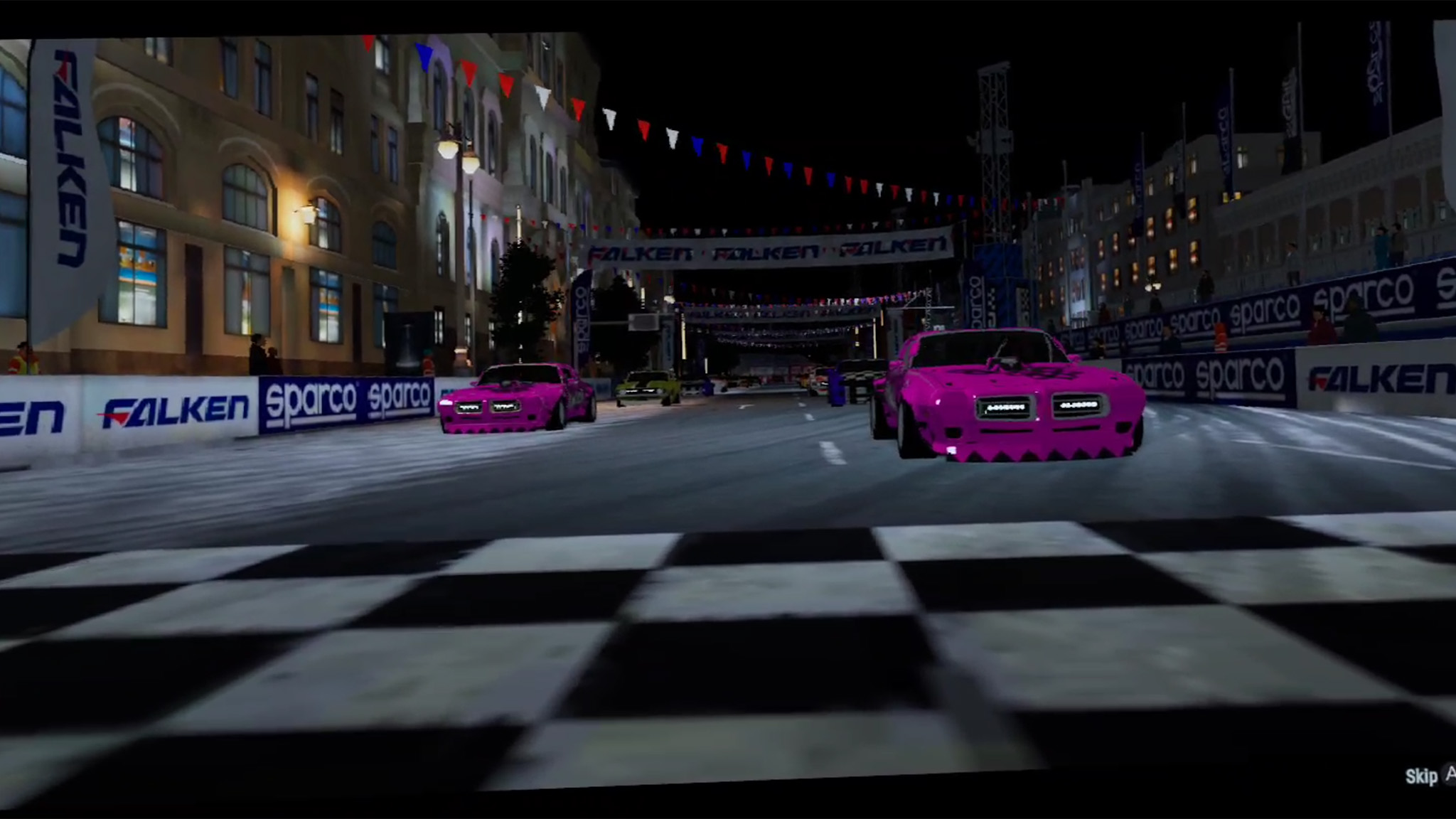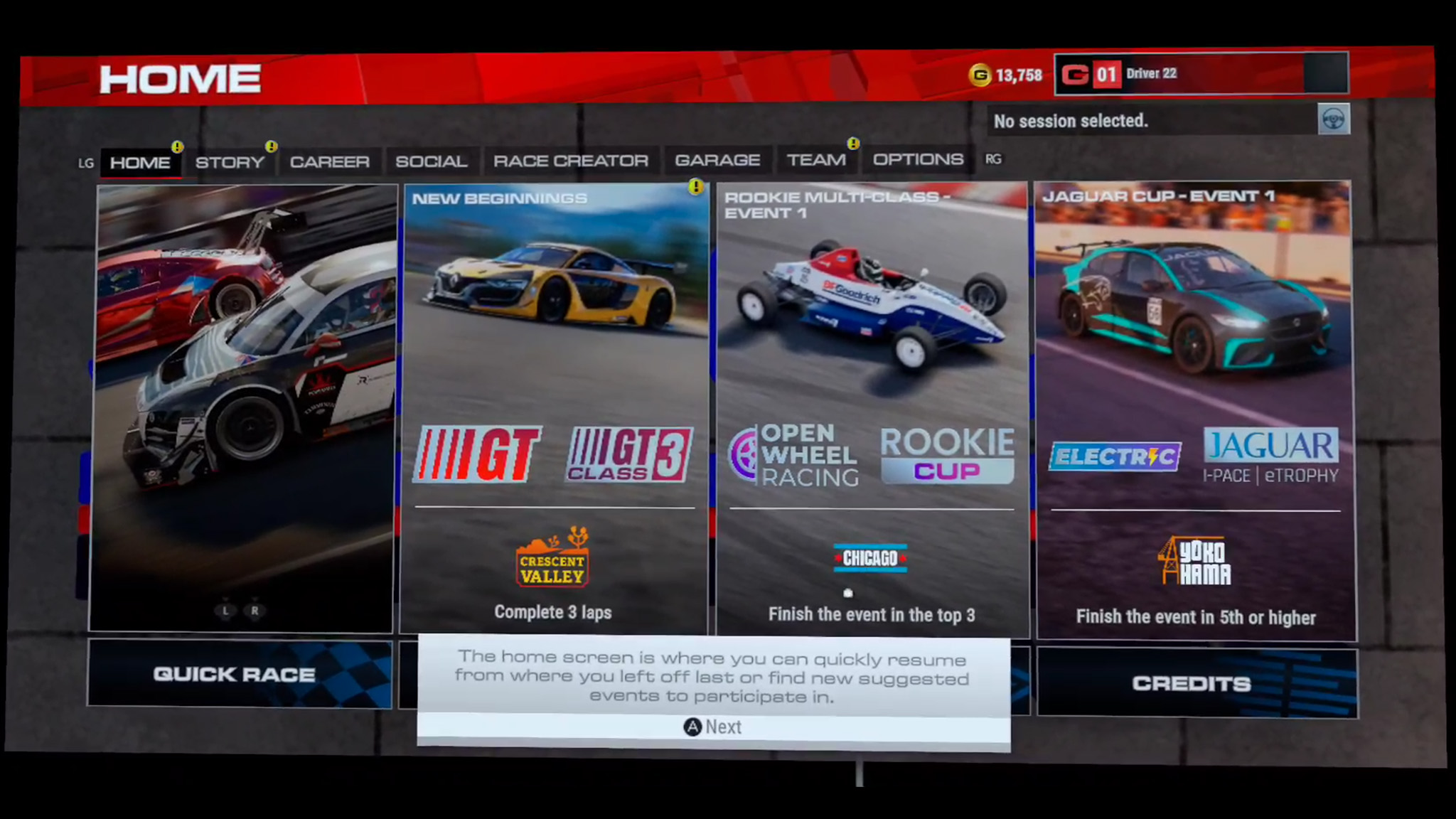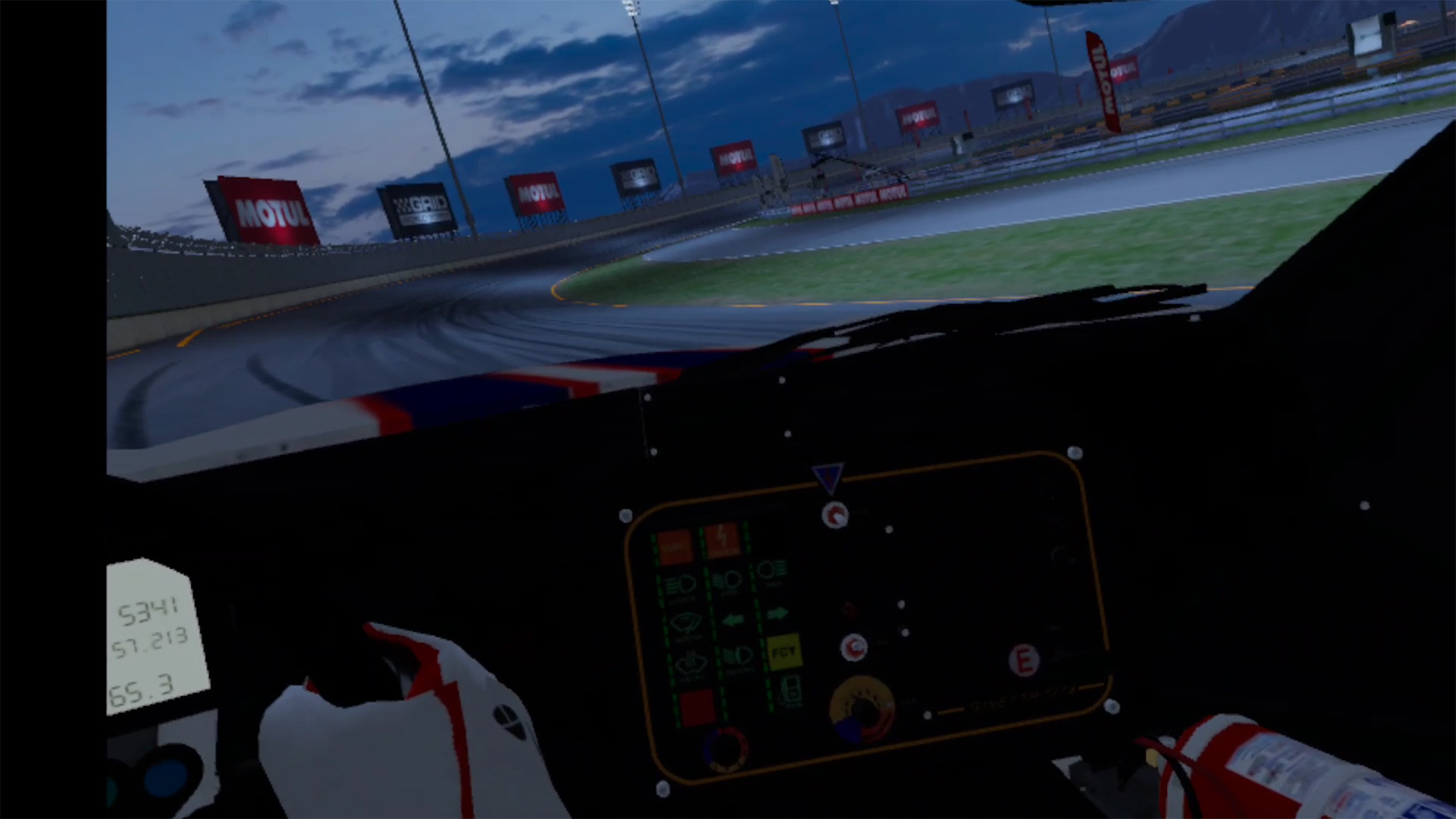GRID Legends for Quest is proof that even bad ports can be pretty good games
You just have to look a bit under the surface to find it.

GRID Legends is the perfect illustration of a disastrous game launch. When EA and Codemasters announced the game's existence a mere 6 days before its release, most of us in the XR community had a very bad feeling about what that could mean for the game's quality. Upon release, our fears were realized: this is a sloppy port released just after the Holidays likely in a cash-grab effort to capitalize on the millions of Quests that were opened on Christmas day.
Almost everything about this port is bad, but the game itself actually isn't. The graphics are bad and the performance can even be pretty bad. The controls mostly suck and don't take advantage of the platform at all. It's even obviously just straight-ported in most ways, including the painful amount of menus and other nonsense you'll have to sit through before you race.
But, even as someone who is not in the intended audience for the title — after all, I own a 20-year-old Toyota Corolla and know almost nothing about cars — I can see how addicting this game can be. The physics are good. The story is good. The locations are interesting and the rewards for winning are heavy. It's got dozens of hours of gameplay and even more if you get into the multiplayer.
So why didn't EA at least try to give a damn when it ported it to the Oculus Quest 2? Boy, I sure wish I knew.
A sign of things to come. Maybe. Also, hopefully not.

EA has dabbled in VR before and it's mostly resulted in failed experiments. Star Wars: Squadrons is the one shining good example among all the bad or unnoteworthy attempts — the most disappointing of which is probably Medal of Honor: Above and Beyond.
But, like with Medal of Honor, GRID Legends' existence gives me hope that we'll start to see some larger IPs make their way to VR. We've had a smattering of them over the past few years and, with the popularity of the Meta Quest, I have a feeling we're going to start seeing a lot more in the coming years.
I just hope they all aren't like this.
Get the latest news from Android Central, your trusted companion in the world of Android
Lightly touching on the visuals, it's clear that the developers were tasked with getting this game ported to the Quest 2 in as little time as possible. Without any inside information, though, I can only assume this. Here's why I think that's the case, though.
It's clear that the developers were tasked with getting this game ported to the Quest 2 in as little time as possible.
First off, it's using something Meta calls Application Space Warp, a technology that's great for porting highly-detailed games to the Quest's modest hardware. The problem is that it's not intended for games with lots of high-speed movement. If it wasn't already apparent by now, this is a racing game. Probably not a great fit for such a tech.
Second, even with the use of this tech, the performance can be abysmal at times. Several times during any given race, the game can randomly hitch and pause, clearly calculating something in the background before resuming the action again. It can absolutely break your concentration when it happens, as it did with mine in this clip below.
Next up are the controls, which are the laziest, sloppiest transition into VR I think I've ever seen. Forget the fact that you've got these amazing controllers in your hands that don't have just buttons and joysticks, but can also be perfectly tracked in real space as you move your arms and hands.
Seems like Codemasters forgot this little tidbit and decided that buttons were the only thing that mattered to "real gamers" or something and completely wrote off any aspect of tracking. Those hands you see on the steering wheel? Yeah, those aren't your hands. They're just there for decoration.
Those hands you see on the steering wheel? Yeah, those aren't your hands. They're just there for decoration.
To control cars in GRID Legends, you'll just be tapping the left joystick to the left or right to steer. The trigger on the right controller is your gas pedal, while the trigger on the left controller is the brake. Slap that A button every so often to ignite the emergency break and you've basically completed the driving tutorial.
Granted, some of this is Meta's fault for not allowing proper driving wheel accessories on the Quest yet. You'd think a company with as much clout as EA could have worked with Meta to launch their high-profile racing game alongside such a big feature addition but, no. At least that fits in with the narrative that EA didn't care about this port in the first place.

Lastly, the entire interface — even the one in the first-person car view — feels completely out of place in VR. Plenty of VR games suffer from "2D UI" problems but GRID takes it to a new level. In most cases, you're just looking at a floating TV in front of you that's clearly the same thing you'd see when playing on an Xbox or PlayStation on your real TV.
Can you imagine driving a real car without any rear-view or side mirrors? Yeah, I can't either.
Some of this is fine enough — I don't need the devs to come up with some metaverse-looking menu when a simple click will work — but lots of the issues also combine with the game's poor visuals.
Mirrors in cars don't work at all, for instance. They're just a gray texture with no attempt at a reflection or easy way to know where your opponents are. Can you imagine driving a real car without any rear-view or side mirrors? Yeah, I can't either.
At least you can pivot your head to look around which takes advantage of VR in some way, but most of these racing cars aren't built to let you take in your glorious surroundings. They were built for speed, not for views.
Never judge a book by its tattered, worn cover
The problems in this game go far beyond the usual "never judge a book by its cover" saying, but the same thought still applies here. If you can get past the ugly graphics, the shoed-in controls, and the poorly optimized performance and UI, you'll find a game that will reward you with dozens (or hundreds) of hours of content.
As you race, you'll earn coins, level up, and can purchase different cars, decals, and even power-ups for friendly AI drivers. You'll drive everything from semi-trucks to racing pickups, Dodge Chargers and other muscle cars, F1 cars, offroad rally-type vehicles, and more.
The tracks aren't nearly as interesting as the car variety but they're not bad tracks, by any means. Just a bit vanilla as far as a street racing game goes.
If you can get past the ugly graphics, the shoed-in controls, and the poorly optimized performance and UI, you'll find a game that will reward you with dozens (or hundreds) of hours of content.
What's not so vanilla is the AI which often makes human-like mistakes while driving. I've seen them wipe out around a corner by going too fast, crash into a wall and ruin the car and plenty of other behavior that's surprisingly convincing. The game also has proper damage modeling, which you can enable to your detriment in the settings.

You can even play this one online with other GRID Legends gamers, extending the lifetime of the game well beyond the single-player unlocks or story mode.
The point is that, despite all the issues, GRID Legends is still a good game on Quest 2. It's definitely not worth the $40 entry price because it's such a half-baked effort but, if you're a racing fan and are looking for a solid racing SIM — even if this one is a bit more arcadey than something like Gran Turismo — you're not going to get any better on Quest 2.
Truth be told, though, if you've got any other system GRID Legends is on, you're probably better playing it there.

